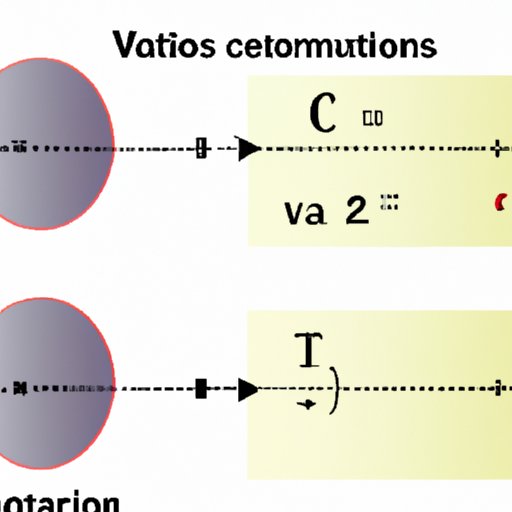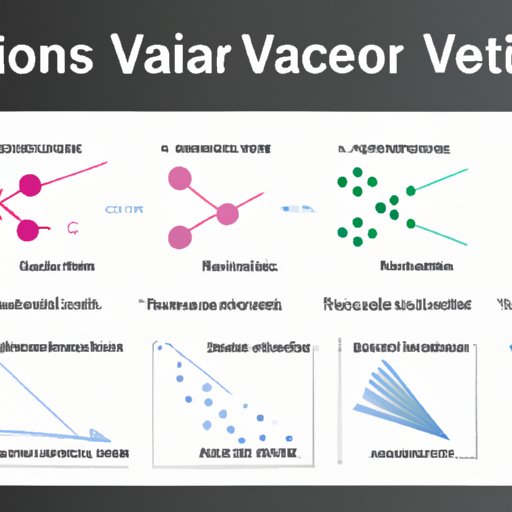Introduction
A vector is a mathematical object used to represent physical quantities such as force, velocity, and acceleration. Vectors have both magnitude and direction, and they are used extensively in the sciences to represent physical phenomena. In this article, we will explore the basics of vectors and their applications in the sciences.
Explaining What a Vector Is in Science: A Beginner’s Guide
In mathematics, a vector is defined as an ordered set of numbers that can be used to represent a quantity with both magnitude and direction. For example, a vector could represent the speed and direction of a moving object. Unlike scalars, which represent only magnitude, vectors represent both magnitude and direction. As such, vectors are often referred to as “directed quantities” or “directed magnitudes.”
Vectors can be represented graphically using arrows. The length of the arrow represents the magnitude of the vector, while the direction of the arrow indicates the direction of the vector. Examples of vectors include displacement, velocity, and acceleration. These vectors can be used to represent the motion of objects in three-dimensional space.
Vectors can also be classified into two different types: free vectors and bound vectors. Free vectors are not attached to a particular point in space and can represent any physical quantity. Bound vectors, on the other hand, are attached to a particular point in space and must remain constant in magnitude and direction. Examples of bound vectors include forces and moments.

Vector Mathematics: How Vectors Work in the Sciences
Vector mathematics is the study of how vectors can be manipulated and combined to solve problems in the sciences. Vector operations involve adding, subtracting, multiplying, and dividing vectors in order to calculate resultant vectors. These operations are used extensively in physics and engineering to calculate the motion of objects in three-dimensional space.
Scalars are also important components of vector mathematics. Scalars are single numbers that represent magnitude, and they are used to scale vectors. For example, a scalar can be used to multiply a vector to increase its magnitude or divide a vector to decrease its magnitude. Scalars are also used to calculate the dot product and cross product of two vectors.
Vector algebra is a branch of mathematics that deals specifically with vector equations. Vector algebra involves manipulating vectors in order to solve problems in the sciences. Vector equations can be used to calculate the motion of objects in three-dimensional space, as well as to calculate forces, moments, and other physical quantities.
Vector Physics: An Overview of Vector Concepts
Vector physics is the study of how vectors can be used to represent physical phenomena. Vector forces are one of the most important concepts in vector physics. Vector forces are directed magnitudes that can be used to calculate the motion of objects in three-dimensional space. Vector forces can also be used to calculate the momentum of an object.
Vector potentials are another important concept in vector physics. Vector potentials are functions that can be used to calculate the electric and magnetic fields of an object. Vector potentials are used extensively in electromagnetism to calculate the interaction of electric and magnetic fields.

The Role of Vectors in Scientific Applications
Vectors play an important role in many scientific applications. In physics, vectors are used to describe the motion of objects in three-dimensional space. Vectors are also used in engineering to calculate forces and moments, as well as to design structures that can withstand external forces. In chemistry, vectors are used to describe the motion of atoms and molecules.

Visualizing Vectors: Understanding Vector Components in Science
Visualizing vectors is an important aspect of understanding how vectors work in the sciences. Vectors can be represented graphically using arrows, where the length of the arrow represents the magnitude of the vector and the direction of the arrow indicates the direction of the vector. Vector components can also be visualized by breaking down the vector into its individual components. This can be done by decomposing the vector into its x, y, and z components.
Analyzing vector diagrams is also an important aspect of understanding vectors in the sciences. Vector diagrams can be used to calculate the magnitude and direction of a vector, as well as to calculate the resultant vector when two vectors are combined. Analyzing vector diagrams can also be used to calculate the dot product and cross product of two vectors.
Conclusion
In conclusion, vectors are essential components of scientific research. Vectors have both magnitude and direction, and they are used extensively in the sciences to represent physical phenomena. Vector mathematics involves manipulating and combining vectors in order to solve problems in the sciences, while vector physics involves using vectors to represent physical phenomena. Vectors are also used in many scientific applications such as physics, engineering, and chemistry. Finally, vectors can be visualized graphically and analyzed using vector diagrams.
(Note: Is this article not meeting your expectations? Do you have knowledge or insights to share? Unlock new opportunities and expand your reach by joining our authors team. Click Registration to join us and share your expertise with our readers.)
